
Dr. Mark Adams is Scientific Director for the J. Craig Venter Institute. Dr. Adams comes from a rich background including industry, government, academic, and nonprofit settings. Throughout he has focused on applying leading edge genomic and bioinformatic approaches to a variety of research problems in biology. Trained as a microbiologist and biochemist, he developed a strong interest in bioinformatics in the early 1990s. Through 13 years working at NIH, The Institute for Genomic Research (TIGR), and Celera Genomics, he was responsible for applying new sequencing technologies and analytical approaches to sequencing of ESTs, microbial genomes, and ultimately the human genome.
As one of the founding scientists at TIGR, Dr. Adams established and managed the large-scale DNA sequencing facility. The initial work focused on developing a large collection of ESTs from several hundred cDNA libraries. He also contributed extensively to determining the first genome sequence of a free-living organism, Haemophilus influenzae, among other microbial genomes. In 1998, Dr. Adams co-founded Celera Genomics, where he was responsible for the DNA sequencing and genome annotation groups. He directed the Drosophila, human, and mouse genome sequencing projects and re-sequencing of exons and regulatory regions of all human genes to identify novel functional SNPs.
Following his work at Celera Genomics, in 2003 Dr. Adams went to Case Western Reserve (CWRU) as an Associate Professor in the Department of Genetics where his focus shifted towards leveraging newly available genome information and technology driven by investigation of fundamental biological problems. At CWRU, he developed a research program in the evolution and mechanisms of antibiotic resistance in the nosocomial pathogen Acinetobacter baumannii.
Dr. Adams leads JCVI’s programs related to bacterial pathogens as part of the Institute’s NIAID-funded Genome Center for Infectious Diseases.
Dr. Adams received a B.A. in Chemistry from Warren Wilson College in Swannanoa, NC in 1984. He received his Ph.D. in Biological Chemistry from the University of Michigan in 1990. His dissertation work involved characterization of the genes involved in branched-chain amino acid transport in Escherichia coli.

Gillian Air is George Lynn Cross Research Professor of Biochemistry and Molecular Biology at the University of Oklahoma, where she is also associate dean of the Graduate College.
After earning a Ph.D. in biochemistry from the University of New South Wales in Australia, Air did postdoctoral research from 1970 to 1973 in the laboratory of Frederick Sanger at the MRC Laboratory of Molecular Biology, University of Cambridge.
In Sanger’s lab, Air began by determining protein sequences in the coat proteins of the bacteriophage Phi X-174. She then began to work on DNA sequencing. Phi X-174 was the first full genome to be sequenced.
In subsequent work, Air has done research on the glycobiology of the influenza virus.

Shankar Balasubramanian is the Herchel Smith Professor of Medicinal Chemistry at the University of Cambridge and senior group leader at the Cambridge Institute.
Shankar is a nucleic acids expert who is recognised for contributions to chemistry and its application to the biological and medical sciences. He is a co-inventor of the leading next generation nucleic acid sequencing methodology, Solexa sequencing (now Illumina) that has made routine, accurate, low-cost sequencing of human genomes a reality and has revolutionised biology.
He has made seminal contributions to the identification, elucidation and manipulation of non-coding genetic elements, particularly four-stranded structures called G-quadruplexes. His work on the intervention of nucleic acid function using small molecules has revealed a number of molecular mechanisms that can be exploited, e.g. to modulate the biology of cancer.
More recently, inventive contributions from his group on chemistry for quantitative analysis of 5-methylcytosine, 5-hydroxymethylcytosine and 5-formylcytosine at single base resolution.

Hagan Bayley is the Professor of Chemical Biology at the University of Oxford.
He received his B.A. in chemistry from Oxford in 1974, while at Balliol College, and his Ph.D. in chemistry from Harvard University in 1979 in the laboratory of Jeremy Knowles.
After postdoctoral work with Gobind Khorana at the Massachusetts Institute of Technology, he was on the faculty at Columbia University and the University of Oxford. From 1988 to 1996, he was at the Worcester Foundation for Experimental Biology in Shrewsbury, Massachusetts, and from 1997 to 2003 at Texas A&M University in College Station.
The development of engineered pores for stochastic sensing, the study of covalent chemistry at the single molecule level, ultrarapid DNA sequencing and the synthetic biology of minimal tissues are major interests of his laboratory. In 2005, Dr. Bayley founded Oxford Nanopore to exploit the potential of stochastic sensing technology. The company has developed the MinION portable DNA sequencer.
In 2014, he founded OxSyBio to build synthetic tissues for regenerative medicine.
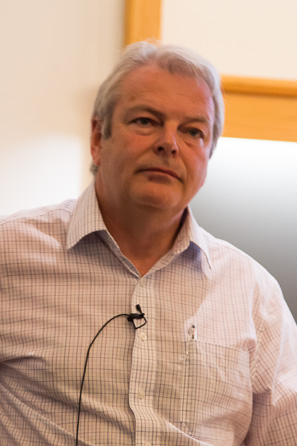
David Bentley is Vice President and Chief Scientist at Illumina, which develops tools for genetic sequencing and analysis. Bentley studied biochemistry at the University of Cambridge and earned his doctorate from the University of Oxford. As a postdoctoral fellow and lecturer at Guy’s and St. Thomas’s Hospital in London from 1991 to 1993, he studied mutations and genetic diseases.
In 1993 Bentley joined the Wellcome Trust Sanger Institute, then known as the Sanger Centre, where he directed their involvement with the international Human Genome Project. Bentley then joined Solexa, a developer of sequencing technology that was acquired by Illumina in 2007.
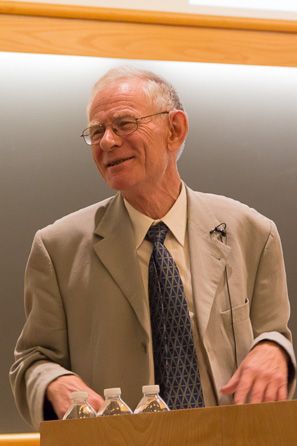
George Brownlee is a renowned pathologist and molecular biologist. He earned his Ph.D. from the University of Cambridge in 1967, where he studied under Frederick Sanger in the MRC Laboratory of Molecular Biology.
He remained at Cambridge for another thirteen years, focusing on molecular biology and the then-new fields of RNA and DNA sequencing. In 1977, his group discovered what came to be known as “pseudogenes.”
In 1980, Brownlee took up a post at the University of Oxford as the first E.P. Abraham Professor of Chemical Pathology at the Sir William Dunn School of Pathology. After arriving at Oxford, he began to work on applying the techniques of molecular biology to medical problems, studying, among other things, gene regulation in influenza.
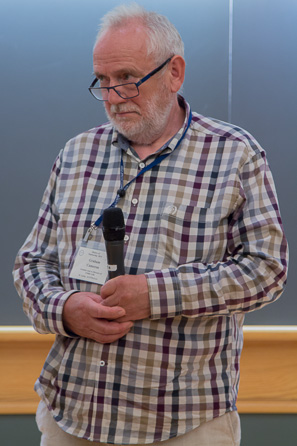
Graham Cameron worked for thirty years for the European Molecular Biology Laboratory (EMBL), where he helped to establish the European Bioinformatics Institute (EBI). He joined EMBL in 1982 and became the director in 1986.
The nucleotide data library run by the EBI became one of the most important in the world and was one of three international databanks used during the Human Genome Project.
Cameron retired from his directorship of EMBL in 2012 and thereafter joined EMBL Australia at the University of Queensland.
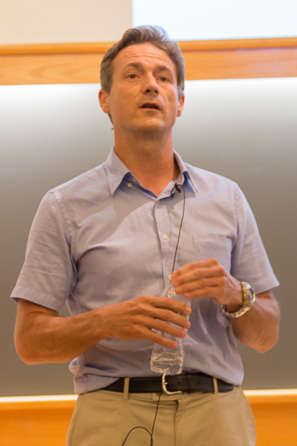
Born and Educated in Italy he obtained his doctoral degree at the University of Trieste in 1989. From 1990 to 1995 he developed technologies for DNA extraction and DNA sequencing at Talent, a spin-off biotech.
He moved to Japan in 1995 at RIKEN, Tsukuba Life Science center and became tenure researcher in 1997. He has been developing technologies to capture full-length cDNAs, which were used for the construction of the Fantom projects. Between 2008 and 2013, he was a Team and Unit Leader and a Deputy Project Director at the RIKEN Omics Science Center in Yokohama. He has developed technologies to analyze the transcribed part of the genome (transcriptome), such as the cap-trapper and the CAGE. These technologies have been broadly used in the RIKEN Fantom projects and allowed identifying non-coding RNAs as are the major output of the mammalian genome and providing comprehensive maps of the mammalian promoters. Additionally he developed a miniaturization of CAGE, in order to approach biological problems that for which there is limited amount of starting material.
From April in 2013, he is a Director of the Division Genomics Technologies and a Deputy Director of Center for Life Science Technologies, RIKEN. He has published more than 230 papers and book chapters, edited books and is a member of editorial boards of various scientific journals.

Norman Dovichi is Grace Rupley Professor of Chemistry and Biochemistry at the University of Notre Dame. He earned his Ph.D. in chemistry from the University of Utah in 1980, and after postdoctoral work at the Los Alamos National Laboratory held professorships at the University of Wyoming, University of Alberta, and the University of Washington.
Dovichi was an integral figure during the Human Genome Project, developing capillary array electrophoresis instruments that were used by Applied Biosystems for one of their commercial DNA sequencer models. Referring to this work, the journal Science has called Dovichi an “Unsung Hero of the Human Genome Project.”

William Efcavtich is the co-founder and Chief Scientific Officer of Molecular Assemblies, Inc., which works on developing DNA synthesis technologies.
Efcavitch received his Ph.D. in 1981 from the University of Ohio, Athens, and completed postdoctoral research at the University of Colorado, Boulder. He then joined Applied Biosystems, where he spent 18 years developing various biotechnology instruments, including successive models of DNA synthesizers.

After his PhD at Imperial College London, Miguel Garcia Sancho Sanchez worked at Manchester University, Centre for the History of Science, and the Spanish National Research Council (CSIC), Department of Science, Technology and Society. His research interests are in the history of contemporary biomedicine, with special emphasis on the transition between molecular biology and new forms of knowledge production at the fall of the 20th century: biotechnology, bioinformatics and genomics. He is now developing a five-year Chancellor's Fellowship in the Department of Science, Technology and Innovation Studies of the University of Edinburgh.
His research focuses on the history of agricultural biotechnology and the cloning of Dolly the sheep, and the development of concerted mapping and sequencing initiatives, with special attention to the science, politics and socio-economic expectations behind the human and other large-scale genome projects which proliferated in the 1980s and 90s. A paperback edition of his book Biology, Computing and the History of Molecular Sequencing: From Proteins to DNA was recently published by Palgrave-Macmillan. He previously worked as a journalist and is interested in science communication and public engagement.
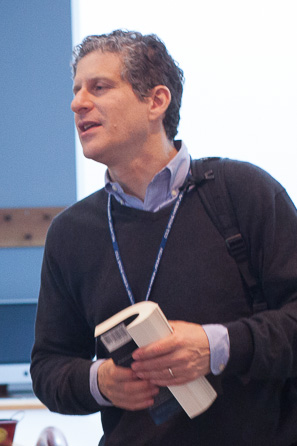
Mark Gerstein is Albert L. Williams Professor of Molecular Biophysics and Biochemistry and Professor of Computer Science at Yale University, where he is also co-director of the Yale Computational Biology and Bioinformatics Program. His research focus is in genomics and bioinformatics, specifically areas like database design and functional-genomics datasets.
Gerstein studied physics at Harvard University before earning a Ph.D. in biophysics and chemistry from the University of Cambridge in 1993. He then completed postdoctoral research in bioinformatics at Stanford University. Gerstein is an editor for Current Opinion in Structural Biology, responsible for the journal’s Sequences and Topology section.

Dr Jack A Gilbert earned his Ph.D. from Unilever and Nottingham University, UK in 2002, and received his postdoctoral training at Queens University, Canada. He subsequently returned to the UK in 2005 to Plymouth Marine Laboratory at a senior scientist until his move to Argonne National Laboratory and the University of Chicago in 2010. Currently, Dr Gilbert is Group Leader for Microbial Ecology at Argonne National Laboratory, Associate Professor in the Department of Ecology and Evolution and the Department of Surgery at University of Chicago, Associate Director of the Institute of Genomic and Systems Biology, Research Associate at the Field Museum of Natural History, and Senior Scientist at the Marine Biological Laboratory. However, in November Dr Gilbert will likely become a full Professor in the Department of Surgery at UChicago.
Dr. Gilbert uses molecular analysis and sequencing tools to test fundamental hypotheses in microbial ecology. He has authored more than peer reviewed 180 publications and book chapters on metagenomics and approaches to ecosystem ecology (www.gilbertlab.com).
He is currently working on generating observational and mechanistic models of microbial communities in natural, urban, built and human ecosystems. He is on the advisory board of the Genomic Standards Consortium (www.gensc.org), and is the founding Editor in Chief of mSystems. Among other projects, he leads the Earth Microbiome Project (www.earthmicrobiome.org), Home Microbiome Project (www.homemicrobiome.com), Hospital Microbiome Project (www.hospitalmicrobiome.com), and co-founded American Gut (www.americangut.org).
In 2014 he was recognized on Crain’s Business Chicago’s 40 Under 40 List, and in 2015 he was listed as one of the 50 most influential scientists by Business Insider.
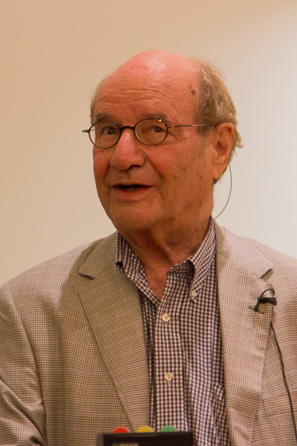
Walter (Wally) Gilbert was awarded the 1980 Nobel Prize in Chemistry for his discovery of a method for rapid DNA sequencing. His forty-year academic career at Harvard University was marked by many discoveries, including messenger RNA, genetic repressors, DNA sequencing, and the first expression of insulin in bacteria.
Walter Gilbert is the Carl M. Loeb University Professor Emeritus at Harvard University. He is currently a managing director at BioVentures Investors, a venture capital fund in Cambridge, MA. He now spends the majority of his time actively engaged in photography and digital artwork, which he shows across the globe. In 2009, he collaborated on a book about the Boston Ballet Company, Behind the Scenes at Boston Ballet, with Boston Globe writer Christine Temin.
In 1978, Walter Gilbert co-founded Biogen, the world’s oldest independent biotechnology company, and served as its chairman and chief executive officer from 1981 to 1985. As CEO, he conducted the company’s Initial Public Offering in 1983.
In 1992, he co-founded Myriad Genetics and continues to serve as its Vice-Chairman. In 1996, he co-founded Paratek Pharmaceuticals and served as Chairman until 2014.
Walter Gilbert serves as a member of the Board of Scientific Governors of The Scripps Research Institute and as chairman of the Harvard Society of Fellows. He is a member of the National Academy of Sciences, a foreign member of the Royal Society, and a recipient of numerous awards and honorary degrees.

Philip Green is Professor of Genome Sciences and Adjunct Professor of Bioengineering and Computer Science at the University of Washington. He is one of the founding figures of bioinformatics. His research focuses on using computational biology to study cellular function at the molecular level and of creating new software tools to do so. During the Human Genome Project, his work in creating tools to assemble the genome enabled the project to move ahead much more quickly.
Green studied at Harvard University and obtained his Ph.D. from the University of California at Berkeley. He has held positions at Columbia University and the Institute for Advanced Study before joining the University of Washington in 1994. From 2000 to 2009, Green was a Howard Hughes Medical Institute Investigator.

Cheryl Heiner is Principal Scientist at Pacific Biosciences, where she works in researching and developing new sequencing technologies. Before joining that company, she spent 23 years as a research scientist at Applied Biosystems, the company that developed the first commercially available automated DNA sequencing machine.
Heiner was educated at Indiana University Bloomington.

Dr. Leroy E. Hood graduated from the Johns Hopkins University School of Medicine in 1964 and from Caltech with a PhD in biochemistry in 1968.
After three years as a Senior Investigator at NIH, his academic career began at Caltech, where he and his colleagues developed the DNA gene sequencer and synthesizer, and the protein synthesizer and sequencer–four instruments that paved the way for the successful mapping and understanding of the human genome.
Over his career Hood has focused on diverse areas: molecular immunology, neurobiology, cancer, neurodegeneration, genomics, proteomics and systems biology.
A pillar in the biotechnology field, Dr. Hood has played a role in founding fifteen biotechnology companies including Amgen, Applied Biosystems, Integrated Diagnostics and Arivale. He is a member of the National Academy of Sciences, the National Academy of Engineering, and the Institute of Medicine. Of the more than 6,000 scientists world-wide who belong to one or more of these academies, Dr. Hood is one of only fifteen people nominated to all three.
Dr. Hood has co-authored numerous textbooks in biochemistry, immunology, molecular biology and genetics, as well as a popular book on the human genome project, The Code of Codes and he is just finishing up a text on systems biology.
He is the recipient of numerous national and international awards, including the Lasker Award for Studies of Immune Diversity (1987), the Kyoto Prize in advanced technology (2002), the Heinz Award for pioneering work in Systems Biology (2006), and the coveted NAE 2011 Fritz J. and Delores H. Russ Prize for developing automated DNA sequencing. In addition to having received 17 honorary degrees from prestigious universities in the U.S. and abroad, Dr. Hood has published over 750 peer reviewed articles and currently holds 36 patents. In 2013, he received the National Medal of Science from President Obama. Hood has been named by The Best Schools as one of the 50 Influential Scientists in the World Today (2014). Scientific American has named Hood as one of the top 6 in their selection of 100 biotech visionaries world-wide (2015).

Clyde Hutchison received a B.S. in Physics from Yale (1960). His Ph.D. work, in the laboratory of Robert L. Sinsheimer at Caltech, concerned the genetics of bacteriophage phiX174.
In 1968 he joined the faculty of the University of North Carolina at Chapel Hill. There he collaborated with Marshall Edgell to develop a marker-rescue assay for DNA fragments, which they used to map phiX174 genes to specific restriction fragments. They also used restriction enzymes to demonstrate maternal inheritance of mitochondrial DNA in mammals.
Hutchison spent a sabbatical in Fred Sanger's lab in Cambridge, England (1975-6), where he took part in sequencing the genome of phiX174. Hutchison met Michael Smith in Sanger's lab.
Upon his return to Chapel Hill, they collaborated to develop the method of site-directed mutagenesis (1978).
His current interest is the design and complete chemical synthesis of a minimal cellular genome.
He is Distinguished Professor in Ham Smith's Synthetic Biology Group at the J. Craig Venter Institute, San Diego, California, and Kenan Professor Emeritus at the University of North Carolina at Chapel Hill.

James Kent is a research scientist at the University of California, Santa Cruz, working in the university’s Center for Biomolecular Science and Engineering. His expertise lies in bioinformatics and the creation of scientific software. In 2000, while still a graduate student at Santa Cruz, he created the first computer program to assemble the entire human genome.

Dr. Korlach was appointed Chief Scientific Officer at Pacific Biosciences in July, 2012. He was previously Scientific Fellow, supporting commercial development of the PacBio RS system and performing research aimed at developing new applications for Single Molecule, Real-Time (SMRT) technologies. He co-invented the SMRT technology with Stephen Turner, Ph.D., Pacific Biosciences Founder and Chief Technology Officer, when the two were graduate students at Cornell University. Dr. Korlach joined Pacific Biosciences as the company's eighth employee in 2004. Previously, he was a Postdoctoral Researcher at Cornell University.
Dr. Korlach is the recipient of multiple grants, an inventor on 62 issued U.S. patents, 14 international patents, and an author of numerous scientific studies on the principles and applications of SMRT technology, including publications in Nature, Science, and PNAS. In 2013, Dr. Korlach was honored by the White House as an Immigrant Innovator “Champion of Change”.
He received both his Ph.D. and his M.S. degrees in Biochemistry, Molecular and Cell Biology from Cornell, and received M.S. and B.A. degrees in Biological Sciences from Humboldt University in Berlin, Germany.

Suzanna Lewis is a principal investigator at Lawrence Berkeley National Laboratory, where she is part of the Berkeley Bioinformatics Open Source Projects. Her work focuses on managing large amounts of biological data through developing databases and other tools. She holds graduate degrees in both microbiology and computer science from the University of Michigan.

Victor Ling is a distinguished scientist at the BC Cancer Agency in Canada and has professorial appointments in pathology, biochemistry, and molecular biology at the University of British Columbia. He studies the development of drug resistance in cancer and discovered a key glycoprotein responsible for this. As a postdoctoral fellow, Ling studied under Frederick Sanger in the MRC Laboratory at the University of Cambridge.
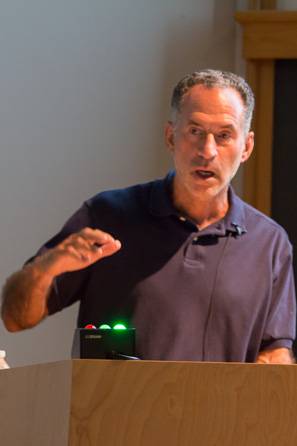
David Lipman is the director of the National Center for Biotechnology Information at the National Institutes of Health, a position he has held since 1989, not long after the NCBI was created. Lipman researches sequence comparison methods. He earned a medical degree from the State University of New York at Buffalo in 1980.
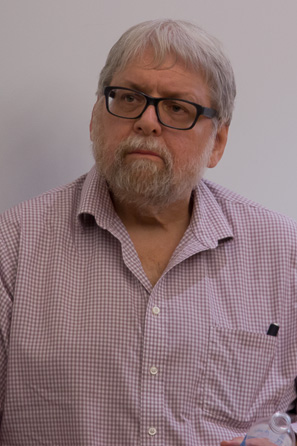
Jim Lupski, a physician and biologist, is Cullen Professor of Molecular and Human Genetics at the Baylor College of Medicine, where he also holds professorial appointments in pediatrics and translational biology. His research interests have to do with genomic disorders. Lupski holds an M.D. and a Ph.D. from New York University.
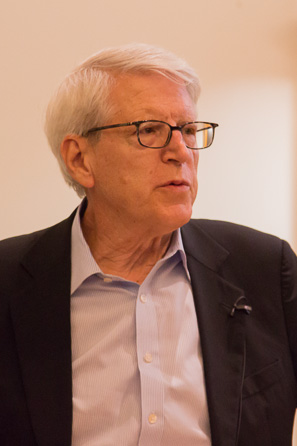
Columbia University Medical Center, New York, NY - The laboratory of Tom Maniatis is interested in understanding fundamental mechanisms of transcription and RNA splicing in the nervous system, and how these mechanisms bear on neuronal connectivity and neurodegenerative diseases. Interest in neuronal connectivity arose from their discovery of a remarkable organization of a large cluster of genes encoding cell surface cadherin-like proteins called protocadherins. The laboratory is also using embryonic stem cell differentiation and deep sequencing methods to study transcription, RNA splicing, protein-RNA interactions, and microRNAs in ALS disease models. This involves studies of SOD1, FUS and TDP43 mouse models, and human patient derived iPS cells. Their current focus is in understanding the role of astrocyte/motor neuron interactions in ALS disease mechanisms. In addition, they are interested in the role of the immune system in ALS, and are investigating the role of microglia in ALS disease mechanisms.

Richard McCombie joined Cold Spring Harbor Laboratory in 1992 and is currently a Professor in the Watson School of Biological Sciences. At Cold Spring Harbor, McCombie has focused on genomics and DNA sequencing and has remained a leader in the sequencing of various organisms, including the mustard plant Arabidopsis thaliana, the mouse, corn, and rice.
Earlier in his career, McCombie worked in the biotechnology industry and also worked at the National Institutes of Health before joining CSHL.
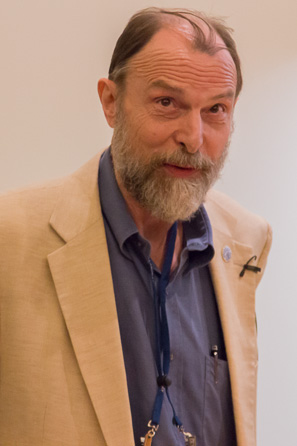
Joachim Messing is a biologist recognized for work in genomics and biotechnology. The shotgun DNA sequencing method and the M13mp/pUC/JM cloning kits made him the most frequently cited scientist in the world for the eighties.
Messing made his innovations freely available, ensuring rapid advances in all life sciences. He helped creating the field of plant genomics with a focus on raising the nutritional quality of food.
Messing was born in Duisburg, Germany, in 1946, studied Pharmacy at the Free University of Berlin, and received his doctorate degree from the Ludwig Maximilian University of Munich in Biochemistry. After studies at the University of California at San Francisco and Davis, he rose through the faculty ranks at the University of Minnesota before becoming a University Professor of Molecular Biology at Rutgers and then the Director of the Waksman Institute of Microbiology, where he holds also the Waksman Chair in Molecular Genetics.
He was winner of the 2013 Wolf Prize in Agriculture and the 2014 Promega Biotechnology Award. Messing, a Fellow of the American Association of the Advancement in Science and the American Academy of Microbiology, is a member of both the US and the German National Academy of Sciences.

Gene Myers is a director at the Max Planck Institute of Molecular Cell Biology and Genetics. Myers’s work in genomics and bioinformatics includes developing BLAST, a popular bioinformatics tool that helps scientists efficiently search databases for sequences. Myers holds a doctorate in computer science from the University of Colorado. His previous positions include a professorship in computer science and molecular biology at the University of California at Berkeley and seven years as Group Leader at the Howard Hughes Medical Institute Janelia Farm Research Campus.

Richard Myers is president, director, and faculty investigator at the HudsonAlpha Institute for Biotechnology in Huntsville, Alabama. Myers holds a Ph.D. in biochemistry from the University of California at Berkeley and completed postdoctoral research under Tom Maniatis at Harvard University. Before joining HudsonAlpha in 2008, he was chair of the genetics department at Stanford University. Myers’s work has focused on identifying genes in inherited diseases. During the Human Genome Project, he was director of the Stanford Human Genome Center, a key contributor of data to the initial sequencing of human DNA.

Debbie Nickerson is Professor of Genome Sciences at the University of Washington. Her work is focused on genomics, specifically the genotyping of human sequence variation. She is also focused on developing the next generation of sequencing technology.
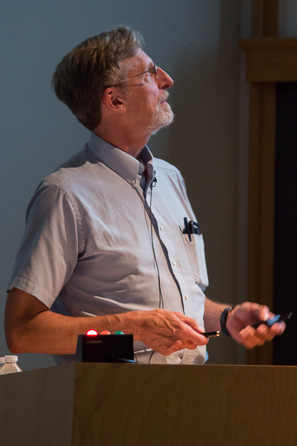
Jim Ostell is Chief of the Information Engineering Branch of the National Center for Biotechnology Information, which he helped to establish in 1988.
Ostell received his doctorate in molecular biology from Harvard University, after which he worked in the biotechnology industry developing commercial software. At NCBI, he has been in charge of such major biological resources as the GenBank and PubMed databases, and his role at the center has spanned both the design and management of these key resources.
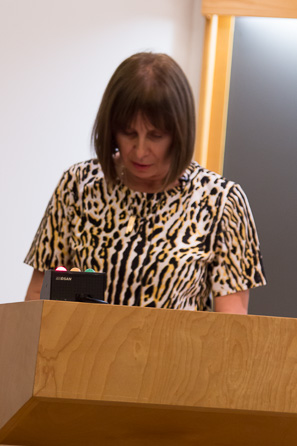
Cold Spring Harbor Laboratory - Ludmila (Mila) Pollock is the Executive Director of the Library & Archives at Cold Spring Harbor Laboratory (CSHL). She has led the Library & Archives since 1999, as well as the Genentech Center since 2006. The CSHL Library is a state-of-the-art library whose mission is to serve the research needs of the international scientific community at CSHL. The CSHL Archives is internationally recognized for building and promoting extensive collections of original documents pertaining to the history of molecular biology and genetics. Under Mila Pollock's leadership, the CSHL Library & Archives has been awarded more than $1.75 million in grant support. Mila has conceived and spearheaded numerous special projects, including the acclaimed CSHL Oral History Project: Talking Science (http://oralhistory.cshl.edu), for which she interviewed more than 150 prominent international scientists in molecular biology, genetics, and biotechnology.

Dr. Richard J. Roberts is the Chief Scientific Officer at New England Biolabs, Beverly, Massachusetts.
He received a Ph.D. in Organic Chemistry in 1968 from Sheffield University and then moved as a postdoctoral fellow to Harvard. From 1972 to 1992, he worked at Cold Spring Harbor Laboratory, eventually becoming Assistant Director for Research under Dr. J.D. Watson. He began work on the newly discovered Type II restriction enzymes in 1972 and these enzymes have been a major research theme.
Studies of transcription in Adenovirus-2 led to the discovery of split genes and mRNA splicing in 1977, for which he received the Nobel Prize in Medicine in 1993. During the sequencing of the Adenovirus-2 genome computational tools became essential and his laboratory pioneered the application of computers in this area.
DNA methyltransferases, as components of restriction-modification systems are also of active interest and the first crystal structures for the HhaI methyltransferase led to the discovery of base flipping. Bioinformatic studies of microbial genomes to find new restriction systems are a major research focus as is the elucidation of DNA methyltransferase recognition sequences using SMRT sequencing.

Jane Rogers is a consultant for the International Wheat Genome Sequencing Consortium. She earned her PhD from Southampton University in 1979 and then completed postdoctoral research in The Netherlands and at the University of Cambridge, using the methods of biophysics to study intracellular signaling. After joining the Medical Research Council in 1990, she helped to establish the Wellcome Trust Sanger Institute, which played a critical role in the international Human Genome Project.
From 1993 to 2007, Rogers headed the Sanger Institute’s high-throughput sequencing facility, which she had also helped to establish. She was therefore a central figure in the UK’s role in the sequencing of the human genome.
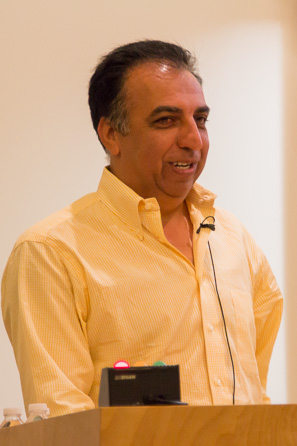
Mostafa Ronaghi, Ph.D., joined Illumina in August 2008. As Senior Vice President and Chief Technology Officer, he is responsible for leading internal research and the Illumina accelerator program.
Ronaghi is an experienced entrepreneur and was involved in the start-up of four life sciences companies. In 2007, Ronaghi co-founded Avantome, a privately held sequencing company (acquired by Illumina in 2008). Before this, he co-founded NextBio, a search engine for life science data (acquired by Illumina in 2013). In 2001, Ronaghi co-founded ParAllele Bioscience, which was eventually acquired by Affymetrix, Inc., and was involved in the development and commercialization of highly multiplexed technology for genetic testing. In 1997, he co-founded Pyrosequencing AB, which was renamed to Biotage in 2003, and led the company to a successful initial public offering in June 2000 on the Stockholm Stock Exchange.
Ronaghi was a principal investigator at Stanford University from 2002¬ until 2008 and focused on the development of novel tools for molecular diagnostic applications. He serves on the board of directors of BaseHealth and Clear Labs.
Ronaghi earned his Ph.D. from the Royal Institute of Technology in Sweden. He holds more than 30 (pending and issued) patents and has written more than 70 peer-reviewed publications in journals and books
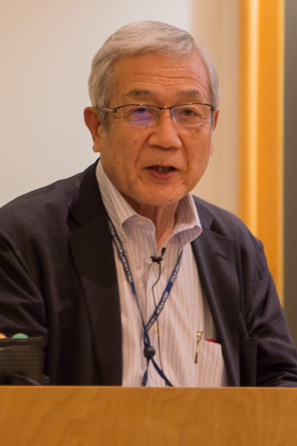
Yoshiyuki Sakaki has been an important figure in the field of genomics, researching human genetics and the function of different genetic structures and playing an essential part in the Human Genome Project by mobilizing Japan’s efforts in the international endeavor.
Sakaki received a Ph.D. in biochemistry from the University of Tokyo and then moved into a number of research positions at various institutions, including the University of California Center for Virus Research, Kyushu University, the University of Tokyo, and the RIKEN Genome Sciences Research Center, of which he was director. In 2008 he became president of Toyohashi University of Technology.
Sakaki has also been heavily involved with the arts in Japan.
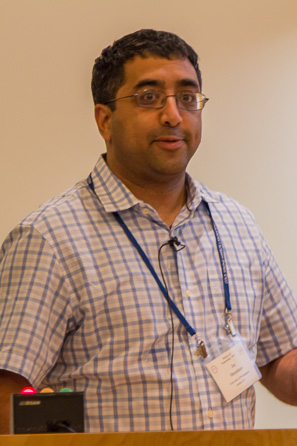
Jay Shendure is an Investigator of the Howard Hughes Medical Institute and Professor of Genome Sciences at the University of Washington.
Dr. Shendure's 2005 PhD included one of the first successful demonstrations of massively parallel or next generation DNA sequencing. His research group in Seattle has made significant contributions to technologies including exome sequencing and its application to identify the basis of Mendelian disorders and autism spectrum disorders; genome-wide experimental haplotyping and its application to non-invasive whole genome sequencing of a human fetus; massively parallel reporter assays and saturation genome editing; and contact probability maps for de novo genome assembly.
He is the recipient of the 2012 Curt Stern Award from the American Society of Human Genetics, the 2013 FEDERAprijs, a 2013 NIH Director's Pioneer Award, and the 2014 HudsonAlpha Life Sciences Prize.

Dr. Melvin I. Simon received his Bachelor of Science degree in 1959 from the City College of New York, and his Ph.D. degree in 1963 from Brandeis University in Waltham, Massachusetts. After completing a postdoctoral fellowship at Princeton University in 1965, he joined the University of California, San Diego. In 1982 he moved to the Division of Biology at the California Institute of Technology, where he served as the Anne P. and Benjamin F. Biaggini Professor of Biological Sciences, and is currently Emeritus (active). In 2007 Dr. Simon returned to UCSD as Adjunct Professor in the Department of Pharmacology, in the School of Medicine and retired in 2013.
Dr. Simon has worked on the mechanism of site-specific recombination in bacteria and on the mechanism of bacterial movement and chemotaxis. He and his colleagues were the first to demonstrate that bacterial flagella were driven by a rotary motor. They also uncovered the mechanism of phase variation showing that the specific inversion of a segment of DNA that carries a flagellin promoter region controlled the ability of the organism to switch from one flagellar antigen type to another. Dr. Simon's laboratory helped characterize the components involved in sensory transduction in bacterial chemotaxis. They were the first to show that the process involved protein-histidine phosphorylation and helped define the nature of "two component" sensory systems in bacteria. They subsequently determined the three-dimensional atomic structure of the protein histidine kinase that plays a central role in this process.
Dr. Simon's most recent contributions have advanced our understanding of signal transduction and intracellular signaling in animal cells. G-protein subunits play a crucial role in transmitting signals from cell surface receptors resulting in changes in intracellular metabolism. They are central to the visual, gustatory, olfactory and nervous systems function in complex organisms. Dr. Simon’s laboratory played a major role in the characterization of the genes that encode the subunit proteins that make up the G protein family. He and his co-workers have generated a variety of mutant mice deficient in components of the G-protein signaling cascade. Their work on the visual system together with Dr. Denis Baylor’s laboratory at Stanford has helped to define the in vivo function of elements of the G-protein mediated phototransduction cascade, and the molecular mechanisms involved in retinal degeneration. More recently Dr. Simon has been working on G-protein receptors that are involved in nociception.
Dr. Simon’s group has also played an important role in the Human Genome Project. They invented the Bacterial Artificial Chromosome (BAC) vector and built many of the initial libraries that provided the basic material for the Human Genome Project. They played an integral role in developing the maps of human chromosomes 16 and 22. Their work was the basis for determination of the complete sequence of chromosome 22. His group has also explored the extension of genomic technology to understanding the role of microorganisms and their function in environmental systems. His interest in environmental microbiology was one of the factors that led to the founding of Diversa Corporation in 1994.
In recognition of his research accomplishments, Dr. Simon received a John Simon Guggenheim Memorial Fellowship in 1978. He was elected to the National Academy of Sciences in 1985, the American Academy of Arts and Sciences in 1986 and received the Selman Waxman award from the National Academy of Sciences in 1991. He has chaired a variety of national and international meetings and has presented many special named lectures. Dr. Simon served as Chairman of the Division of Biology at the California Institute of Technology from 1995-2000.
Dr. Simon has been involved in a variety of capacities with philanthropic and commercial organizations. He is Chairman of the Board of Directors of the Agouron Institute and he was a founding member of Agouron Pharmaceuticals. He was also a founder and a member of the Board of Directors of Diversa (aka Verenium) Corporation. Dr. Simon has served as a member of the Advisory Board of the Howard Hughes Medical Institute, The Gordon and Betty Moore Foundation, the advisory board of the Israel Institute of Technology (Technion), the Hutchinson Institute, the Board of Governors of the American Society of Microbiology, and as a member of a variety of advisory committees for the National Institutes of Health, the National Science Foundation and the Department of Energy.
Dr. Simon published over 350 research articles in peer-reviewed journals in addition to a variety of research reviews. He has served on the Editorial Board of a number of journals and was co-editor-in-chief with Dr. John Abelson of the Methods in Enzymology series.
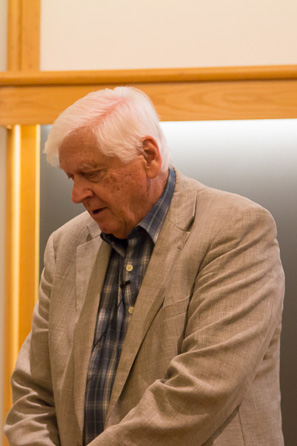
Hamilton O. Smith received an A.B. degree in mathematics at the University of California, Berkeley in 1952 and the M.D. degree from Johns Hopkins University in 1956. After six years of clinical work in medicine (1956-1962), he carried out research on Salmonella phage P22 lysogeny at the University of Michigan, Ann Arbor (1962-1967). In 1967, he joined the Microbiology Department at Johns Hopkins.
In 1968, he discovered the first TypeII restriction enzyme (HindII) and determined the sequence of its cleavage site. In, 1978 he was a co-recipient (with D. Nathans and W. Arber) of the Nobel in Medicine for this discovery.
Subsequently, he studied DNA methylases and nucleases in Haemophilus influenzae Rd and discovered this organism’s sequence-specific DNA uptake during genetic transformation. In 1994-5 he collaborated with J. Craig Venter at The Institute for Genomic Research (TIGR) to sequence H. influenzae by whole genome shotgun sequencing and assembly.
In July 1998, he joined Celera Genomics Corporation where he participated in the sequencing of the Drosophila and human genomes. In November 2002, he left Celera to join the new Institute for Biological Energy Alternatives formed by J. Craig Venter. In 2005, this Institute merged with TIGR to form the J. Craig Venter Institute where he participated in synthesizing the first “synthetic cell” (Science 2010) and currently participates in the effort to create a minimal synthetic bacterial genome.

Lloyd M. Smith is the W. L. Hubbell Professor of Chemistry and Director of the Genome Center at the University of Wisconsin-Madison, where he has been since 1988. He received an A.B. degree in Biochemistry from the University of California at Berkeley (1977) and a Ph.D. in Biophysics from Stanford University (1981).
In 1982 he moved to the California Institute of Technology, where he developed the first fluorescence-based automated DNA sequencing instrument.
He has been named one of Science Digest's Top 100 Innovators and has received the Presidential Young Investigator Award, Eli Lilly Analytical Chemistry Award, Association of Biomolecular Resource Facilities Award for the development of automated DNA sequencing, American Chemical Society Award in Chemical Instrumentation, and the Pittsburgh Analytical Chemistry Award. He has served on the NIH National Human Genome Research Institute Advisory Council, the NIH Human Genome study section, and the NIH Instrumentation and Systems Development study section (chair from 2008-2010).
He is an author of 250 scientific papers, with an H-index of 62, and inventor on 33 issued U.S. patents.
He cofounded the biotechnology company Third Wave Technologies, which went public in 2001, and was acquired in June 2008 by Hologic, Inc. for $580M. His primary area of research is in the development of new technologies for the analysis and manipulation of biomolecules.

Stanley Tabor is Lecturer in the Department of Biological Chemistry and Molecular Pharmacology at Harvard Medical School. He studies DNA polymerases and the role of those enzymes in DNA sequencing technology.
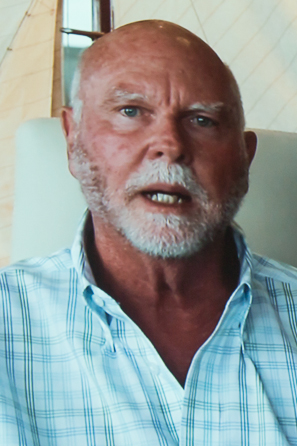
J. Craig Venter, Ph.D., is a biologist renowned for his contributions in sequencing the first draft human genome in 2001, the first complete diploid human genome in 2007 and construction of the first synthetic bacterial cell in 2010.
He is founder, chairman and CEO of the J. Craig Venter Institute (JCVI). He is also a co-founder, chairman and co-chief scientist of Synthetic Genomics Inc (SGI), a privately held company focused on developing products and solutions using synthetic genomic technologies; and a co-founder, executive chairman and CEO of Human Longevity Inc (HLI), a privately held genomics and cell therapy-based diagnostic and therapeutic company focused on extending the healthy, high performance human life span.
He and his teams are focused on a variety of projects and programs including: synthetic genomic research and the application of these advances to develop new vaccines and food and nutritional products, new biofuels and biochemicals; continued analysis of the human genome including the human microbiome, and discovering and understanding genetic diversity in the world's oceans.
Dr. Venter is a recipient of the 2008 National Medal of Science and is a member of the National Academy of Sciences. He is the author of Life at the Speed of Light: From the Double Helix to the Dawn of Digital Life (Viking, 2013) and A Life Decoded: My Genome: My Life (Viking, 2007).

Robert Waterston is Professor and Chair of Genome Sciences at the University of Washington. After studying engineering at Princeton, he earned both an M.D. and a Ph.D. from the University of Chicago. He then studied under Sydney Brenner as a postdoctoral researcher at the MRC Laboratory of Molecular Biology at the University of Cambridge.
Waterston has been an important figure in sequencing and mapping worm genomes. Working with John Sulston, he received one of the earliest grants of the Human Genome Project to sequence the worm genome, which they accomplished two years ahead of schedule. As for the effort to sequence the human genome, Waterston’s group completed more sequencing than any other lab in the United States.
Waterston’s work on sequencing the genome of the nematode C. elegans further cemented his reputation as one of the most important figures in contemporary genomics.

In 1962, James D. Watson shared the Nobel Prize for Physiology or Medicine with Francis Crick and Maurice Wilkins for their discovery of the double-helix structure of deoxyribonucleic acid (DNA) in 1953.
From 1956 to 1976, Watson was a faculty member in the Biology department at Harvard University, where the focus of his research was RNA and its role in the transfer of genetic information.
One of Watson's other major interests is education. His first textbook, Molecular Biology of the Gene, set new standards for biology textbooks, and it was followed by Molecular Biology of the Cell, and Recombinant DNA.
Watson has also played a significant role in the development of science policy, from the War on Cancer, through the debates over the use of recombinant DNA, to promoting the Human Genome Project. From 1988 to 1992, he ran the Human Genome Project at the National Institutes of Health while still directing Cold Spring Harbor Laboratory (CSHL).
Watson has had a long association with CSHL, beginning as a student in a popular summer course on phage genetics. Watson took over the directorship of the Lab in 1968. He is currently Chancellor Emeritus of CSHL. Since 2008 his research interests have moved to the curing of cancer focusing on the biochemistry of cancer cells as opposed to their genetic origins. In a recent paper, Jim sets forth a novel hypothesis regarding the role of oxidants and antioxidants in cancers that are currently incurable, notably in late-stage metastatic cancers.

Jean Weissenbach was born in 1946 in Stasbourg. He headed the programme for the human genetic linkage map at Genethon.. From 1997 to 2014 he has been the director of Genoscope, the French national sequencing center. His career has been centered on molecular biology. He received his Ph.D. from the Louis Pasteur University in Strasbourg in 1977, where he studied the sequencing and coding properties of transfer RNA. As a natural follow-up of his post doc on cloning the genes of human interferons he moved to human molecular genetics, his research interest from 1982 to 2003. During this period his work has included:
Since 1997, with his team at Genoscope, he led or took part in the sequencing and analsysis of large genomes (human chromosome 14, Arabidopsis, Anopheles, Tetraodon, rice, Paramecium, Grapewine etc.) and many genomes of microorganisms. For the last 10-15 years his activity has been focused on genomics and metabolic biochemistry of environmental microorganisms which play an essential role in the equilibria of the biosphere and have important applications in bioremediation and in biotechnology. He is especially interested in exploring the biocatalytic diversity of living systems.
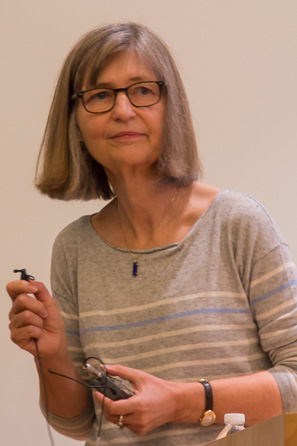
Barbara Wold is Bren Professor of Molecular Biology at Caltech. Her research focuses on using ultra-high throughput sequencing technology to map gene networks, specifically those in the muscles and the brain.
Wold received her Ph.D. from Caltech in 1978, after which she became a research fellow there. She has been on the Caltech faculty continuously since 1981.

Huanming Yang is a prominent geneticist who has helped bring China to the forefront of genomics research. He co-founded the Beijing Genomics Institute (BGI) in 1999 and is currently the organization’s chairman. BGI made China a part of the Human Genome Project, and has also completed significant sequencing projects on the genomes of rice, the giant panda, maize, and many microorganisms.
Yang received his Ph.D. from the University of Copenhagen in 1988 and completed postdoctoral research in both France and the United States.